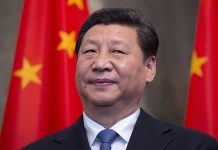ISLAMABAD: China’s outward foreign direct investment (OFDI) in 2020 totalled $153.71 billion, up 12.3 percent year-on-year (YoY), ranking first globally for the first time, according to a 2020 statistical bulletin of China OFDI released recently by China’s Ministry of Commerce, the National Bureau of Statistics, and the State Administration of Foreign Exchange, WealthPK reported.
According to statistics, out of 45,000 Chinese-owned enterprises in 189 countries, 11,000 were located in Belt and Road Initiative (BRI) countries in 2020. China’s direct investment in BRI nations reached $22.54 billion last year, up 20.6 percent from the previous year, and the highest level since 2013.
By the end of 2020, Asia had over 26,000 foreign Chinese-invested firms, accounting for 58.5 percent globally. These foreign Chinese-invested firms include 6,000 in North America and 4,600 in Europe, accounting for 13.5 percent and 10.4 percent of the total, respectively. China’s OFDI 2020 covers a total of 18 industrial sectors.
China’s OFDI stock was around $2.58 trillion at the end of 2020, making it the world’s third biggest behind the United States with a stock of $8.13 trillion, and the Netherlands $3.8 trillion.
For the past five years, China’s FDI has accounted for more than 10 percent of global flows.
“Since the 1990s, China has spent two decades producing industrialisation outcomes, compared with approximately 200 years for certain Western countries,” said Tian Yun, former deputy director of the Beijing Economic Operation Association.
In the coming years, China’s FDI stock would surpass that of the Netherlands, he added.
China’s OFDI and Pakistan
Through the China-Pakistan Economic Corridor (CPEC), Pakistan is a sig-nificant beneficiary of BRI.
The CPEC has attracted $25.4 billion in direct investment to Pakistan and produced thousands of employments. At a meeting of the Joint Coopera-tion Committee (JCC) on the CPEC in September 2021, Ning Jizhe, depu-ty head of China’s National Development and Reform Commission, said, “We will continue to prioritise the CPEC, Gwadar Port, energy, infrastruc-ture, and industrial cooperation.”
The Phase 2 of CPEC is even more promising since it broadens the field of collaboration and focuses on industrial, scientific and technological, as well as agricultural cooperation, said Federal Minister Asad Umar in the JCC meeting.
He stressed that for a sustainable development model, the Pakistan government is trying to introduce stable policies, ease of doing business, and stronger incentives for private sector engagement.
The prime minister has previously given instructions for SEZ authorities and management companies to provide complete investor facilitation. A separate investor facilitation centre for Chinese investors has also been established.
According to the 2020 Statistical Bulletin of China, Pakistan made it to top 10 among BRI countries and top 20 globally in China’s OFDI, WealthPK reported.
Eight Chinese firms with an investment of $845 million have just opened in Faisalabad’s Allama Iqbal Industrial Zone, while a $15 billion investment in the petrochemical industry is set to begin in Gwadar, the hub of the multibillion-dollar CPEC infrastructure projects that began in 2013.
According to Chinese customs, Pakistan’s exports to China in the first half of 2021 totalled $1.73 billion, an extraordinary increase of 84 percent. It is expected that the total for the year 2021 would reach the $3 billion mark.
These numbers suggest that the second phase of the trade agreement has begun, improving bilateral commerce in terms of imports and exports by making it easier for Pakistani enterprises to expand their commercial pres-ence in China.
With the execution of CPEC, Pakistani industries have been re-energised, stimulating Pakistan-China trade and assisting in the establishment of in-ternational-standard manufacturing centres in several Pakistani provinces. -INP





